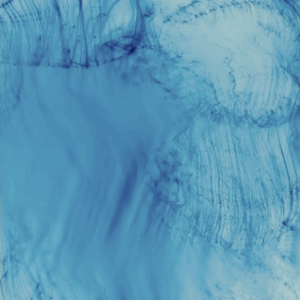JTF (just the facts): A group show containing a selection of works by of 3 photographers, variously framed/displayed, and hung against white walls in the main gallery space and the library alcove.
The following photographers have been included in the exhibit. The checklist did not provide specific process information, so the number of works on view and their dates are detailed as background:
- Edson Chagas: 3 large color prints, 2009, 2013
- François-Xavier Gbré: 1 set of 63 small color prints, 2013, 3 large color prints, 2012, 1 site specific color print installation in the library, 2012
- Mame-Diarra Niang: 6 color prints from Sahel Gris, 2013, 7 color prints from At the Wall, 2014, 10 color prints from Metropolis, 2015
(Installation shots below.)
Comments/Context: The most clichéd landscape view of “Africa”, as if a diverse continent could be summed up in any one representative picture, is a broad grassland at sunset, perhaps with a majestic baobab tree silhouetted against the warm fading light. Inevitably, when searching for imagery of the region, the exotic visual tropes that we have been taught mean “Africa” in some shorthand symbolic way (wide open savannah, desert, animal herds, safaris, tribesmen) are brought forth, irrespective of their relevance to a complex modern view of the region.
But the postcolonial cityscape of Africa’s largest urban areas looks nothing like these stereotypical views. These cities are densely filled with skyscrapers and apartment buildings, in-progress new developments and crumbling relics, mixing imported aesthetic values and local decision making – and when they are dissected, they offer a new perspective on the political, social, and historical questions forever embedded in the land.
This smart show gathers together recent work from three contemporary photographers (Mame-Diarra Niang, François-Xavier Gbré, and Edson Chagas) using these cities as the raw material for their art making. And if there is any overall pattern to the group as a whole, it is a common reliance of the compositional rigors of form when applied to urban scenes, of turning the bustling chaos of cities into the controlled geometries of attentive observation, regardless of whether we are in Luanda, Bamako, Dakar, or Johannesburg.
Three separate projects from Mame-Diarra Niang provide a progression of nuanced ideas, starting with the blocky, unfinished concrete construction of her series Sahel Gris. Shot in a washed out palette of whitened grey and dirty orange and oriented like a panning camera turning around a common horizon, her suburban buildings are seen with dry, empty desolation, like silent heavy monuments to overreaching hope. Her At the Wall series moves in closer to the urban center, circling the city perimeter from a taxi, continually blocked by its edge walls and daunting squared off facades. While Niang has found plenty of pleasing angles and perpendicular lines in these in-between zones, they ultimately draw hard boundaries of separation between insiders and outsiders, with the viewer always stuck behind the walls trying to look in. And her Metropolis project finally works its way downtown, turning the sleek buildings of Johannesburg into formal studies of overlapped patterns, echoing familiar images from Callahan, Crane, Nixon, and others. Hung in a tight grouping of buoyant color, there is energy and action in these pictures, embodied by emphatic, optimistic, upward looking diagonals.
François-Xavier Gbré takes a more intimate approach to the city (actually many cities), pulling us into small prints of architectural details arranged into an undulating grid of formal likenesses. His patterns of doors and windows, stairs and walls, palm fronds and dry leaves, trace a loose connective path, each air conditioner and car park leading to another related cluster of visual similarities, like the handing off of a baton. As the images pile up, a sense of continuity and contrast builds, where the historical details never really fade away. His larger prints offer more direct remnants of tired colonial styles, from ceiling fans and painted murals to ornate couches and rusted stairway railings. One oversized image has been affixed directly to the wall creating a Polidori-like telescoping illusion of space, as if we could use the frame like a portal to traverse space and time.
Edson Chagas has only 3 large prints in this show, but they push the hardest on the urban realities of age, disuse, and elimination. A deflated soccer ball stands forgotten against a gloriously peeling blue wall, the beauty of the ruin undermined by its sense of quiet desolation. A discarded satellite dish has the same grim effect, lingering against a severe Baltz-like pair of windows in the blasting sun. And a wet mop, a broken fan, and a locked up gate offer a similar sense of closed-off abandonment, as if modern consumerism has proven ephemeral against the durable hardness of city life.
The reason this show works is that it offers a sophisticated contrarian view of the surfaces of African cities. There is a rich lushness to all of the textures on view here, even when they bite hard on lingering historical fragments and the evidence of modern disappointments and failures. Those nuances take us out of the simplicity of easy stereotypes and into a more complex discussion about contributing factors and interrelated causes/effects unique to specific locations and circumstances. All three of these photographers see the urban landscape as an evolving setting, where present and past are forced to coexist, and that constant conflicted flux is what gives their imagery its vitality.
Collector’s POV: Since the Walther Collection is a museum-like venue, there are of course no posted prices. The three photographers included in the show are represented by Stevenson Gallery in Cape Town/Johannesburg (for Chagas here and Niang here) and Galerie Cécile Fakhoury in Abidjan (for Gbré here). None of the artists has much in the way of secondary market history, so gallery retail remains the best option for those collectors interested in following up.















